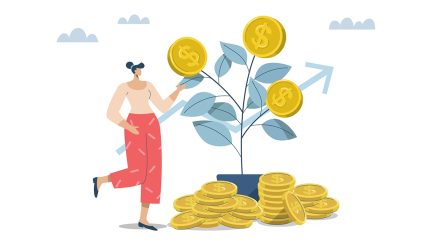Never miss a story — sign up for PLANSPONSOR newsletters to keep up on the latest retirement plan benefits news.
Consider Demographic Differences When Planning Financial Wellness Initiatives
Like the general population, financial literacy varies across demographic groups within the African-American population, TIAA Institute finds.
According to a new analysis by TIAA Institute based on its Personal Financial Index, the nation’s 44 million African-Americans account for 13% of the U.S. population. Their economic impact is significant, TIAA Institute says, with $1.2 trillion in spending activity annually, representing more than one-third of overall spending in several key economic categories.
TIAA Institute’s report is frank in stating that the financial situation of African-Americans lags that of the U.S. population as a whole, and of white people in particular. Simple economic indicators illustrate the gap, but the reasons underlying the gap are many and complex—tied directly to the racially divided history of the United States and the prejudicial treatment of black people over centuries by governments and corporate institutions.
“While 66% of African-Americans report that they are doing at least okay financially, the comparable figure among whites is 78%,” the report states. “Median household income among African-Americans was $35,400 in 2016; median household income of whites was $61,200. African-American household net worth was $17,600 in 2016 and 19% had zero or negative net worth; the analogous figures for white households were $171,000 and 9%, respectively.”
Like the general population, financial literacy varies across demographic groups within the African-American population, TIAA Institute finds. Financial literacy is greater among men, older individuals, those with more formal education, and those with higher incomes. Also reflecting the full U.S. population, there is a strong link between financial literacy and financial wellness among African-Americans. In the analysis, financial wellness is defined as a state of being where a person has the capacity to absorb a shock, has control over weekly and monthly expenses, and has some freedom to spend money to enjoy life. Those who are more financially literate are more likely to plan and save for retirement, to have non-retirement savings and to better manage their debt.
In some ways such findings are obvious; who would expect that people who are less financially literate would be likelier to be making investments in the equity or bond markets, or to feel that they are secure in their plans for retirement? Nonetheless, the TIAA Institute researchers explain, it is important to objectively examine the areas where African-American people (and Americans generally) can use more targeted support and education from financial institutions, governments and nonprofit advocacy groups.
According to TIAA Institute, insurance is the functional area where personal finance knowledge appears to be lowest among African-Americans. Other functional areas where more support is needed are comprehending risk, investing and identifying go-to information sources.
On the other hand, borrowing and debt management is the area of highest personal finance knowledge among African-Americans, TIAA Institute says. In part, this seems to be the case because more African-American people are pursuing higher education, with many utilizing student loans and other financing strategies. Unfortunately, African-Americans are more likely than whites to feel that they currently have too much debt (45% vs. 35%, respectively). African-Americans are more likely than whites to carry student loan debt (41% and 21%, respectively). Among those with student loan debt, African-Americans are more likely to have been late with a payment in the past year (59% compared with 35%).
Among credit card holders, 68% of African-Americans engage in “expensive credit card behaviors,” TIAA Institute finds. Such behavior includes paying only the minimum due, incurring late payment fees, incurring over-limit fees, and taking cash advances.
“A more refined understanding of financial literacy among African-Americans—their level of overall financial knowledge, areas of strength and weakness, and variations among subgroups—can inform initiatives to improve financial wellness,” the TIAA Institute report says. “While not a cure-all, increased financial literacy can lead to improved financial capability and practices that benefit even those with relatively low incomes.”


